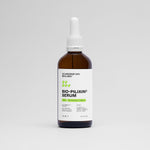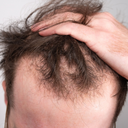Hair loss is a common concern that affects millions of people worldwide, impacting self-confidence and quality of life. While genetics, stress, and nutritional deficiencies often contribute to hair thinning, one of the most significant and sometimes overlooked factors is hormonal imbalance. In this guide, we delve into how an imbalance of hormones can lead to hair loss, the underlying mechanisms involved, and what steps you can take to address and manage this condition.
Hormones act as chemical messengers that regulate many bodily functions, including metabolism, growth, mood, and importantly, hair growth. When these hormones are out of balance, they can disrupt the natural hair growth cycle, leading to thinning, excessive shedding, and ultimately hair loss. This article explains the connection between hormonal fluctuations and hair loss, providing expert insights, treatment options, and prevention strategies to help you regain control over your hair health.
Table of content
Can Hormone Imbalance Cause Hair Loss?
Yes, hormone imbalance can cause hair loss. When hormones such as cortisol, thyroid hormones, estrogen, progesterone, and testosterone are out of balance, they can disrupt the hair growth cycle, leading to increased shedding and thinning of hair. This is particularly evident in conditions like androgenetic alopecia, thyroid disorders, and stress-related telogen effluvium.
As your leading source for hair health information over the past 4 years, we never compromise on accuracy. When it comes to your health, you deserve information you can truly rely on - and earning your trust is our top priority.
Here's how Scandinavian Biolabs ensures every piece of content meets the highest standards of accuracy and integrity:
- Credentialed Experts: Our reviewers are actively practicing doctors and medical researchers
- Stringent Reviews: Content undergoes rigorous editing by subject specialists and review by a practicing doctor.
- Evidence-Based: We rely on well-established research from trusted scientific sources like peer-reviewed journals and health authorities.
- Full Transparency: Our editorial standards, writer credentials, reviewer credentials, correction process, and funding are all publicly documented.
- Independent Voice: While we do promote products, we operate in a vacuum to business operations. Our main goal is just an unwavering commitment to providing medically-sound guidance.
You can count on Scandinavian Biolabs to consistently deliver the trustworthy health information you deserve. Read our Editorial Standards.
Understanding the Role of Hormones in Hair Growth
The human hair growth cycle consists of three main phases:
- Anagen (Growth Phase): The active phase where hair is continuously produced. This phase can last anywhere from 2 to 7 years.
- Catagen (Transition Phase): A brief period lasting about two weeks, during which hair growth slows and the follicle begins to shrink.
- Telogen (Resting Phase): The phase in which the hair follicle rests before the hair eventually falls out, making room for new growth.
Hormones play a critical role in regulating these phases. An optimal hormonal balance ensures that hair remains in the anagen phase for an adequate period, resulting in thick, healthy hair. However, disruptions in this balance can force more hair follicles into the telogen phase, leading to noticeable shedding and thinning.
How Hormone Imbalance Leads to Hair Loss
Multiple hormones are involved in maintaining hair health. When their levels are disrupted, they can negatively impact hair growth. Here are some key hormones and how their imbalances contribute to hair loss:
Cortisol – The Stress Hormone
When you experience chronic stress, your adrenal glands produce excess cortisol. Elevated cortisol levels can:
- Shorten the hair growth phase (anagen), forcing hair follicles into the resting phase (telogen) prematurely.
- Disrupt the normal cycle of hair growth, resulting in a condition known as telogen effluvium, where large numbers of hairs are shed.
- Create a vicious cycle, as the stress from hair loss further increases cortisol production.
Thyroid Hormones
The thyroid gland produces hormones that regulate metabolism and are crucial for hair follicle function. Imbalances can lead to:
- Hypothyroidism: Insufficient thyroid hormone levels can cause hair to become thin, brittle, and fall out diffusely.
- Hyperthyroidism: Excess thyroid hormones can also disrupt the hair growth cycle, leading to thinning and shedding.
Diagnosis and Treatment of Hormonal Hair Loss
Diagnosis
If you suspect that your hair loss is related to a hormonal imbalance, it is important to consult with a healthcare provider or a dermatologist. They may recommend:
- Blood tests to evaluate levels of cortisol, thyroid hormones, estrogen, progesterone, and testosterone.
- Assessment for conditions such as PCOS, thyroid disorders, or other endocrine imbalances.
- Scalp examinations and possibly a biopsy to rule out other causes of hair loss.
Conclusion
In summary, hormone imbalance is a significant factor that can cause hair loss in both men and women. Elevated levels of stress hormones like cortisol, thyroid imbalances, declining estrogen and progesterone in women, and increased DHT levels due to testosterone conversion all play crucial roles in disrupting the hair growth cycle. These hormonal changes can lead to premature entry of hair follicles into the resting phase, resulting in thinning and increased shedding.
By understanding the connection between hormones and hair loss, individuals can take proactive steps to address the underlying causes. Whether through lifestyle modifications, targeted medical treatments, or advanced therapies, restoring hormonal balance is key to halting and even reversing hair loss.
Tired of Thinning Hair? Try a Clinically Tested Serum.
Looking for a natural way to regrow hair and achieve a thicker, fuller head of hair? Ditch the stinging nettle for hair loss – Bio-Pilixin Serum is a drug-free hair activation serum that delivers clinically tested results.
Here's why Bio-Pilixin is superior:
- Clinically Tested Results: 93% of users saw a reduction in hair loss, and 73% experienced increased hair density.
- Safe and Natural: Unlike harsh chemicals, Bio-Pilixin uses plant growth factors derived from stem cell technology to nourish hair follicles and stimulate growth.
- Fast-Acting: See visible results in as little as 45 days (most typically see results within 150 days).
Stop wasting time on unproven remedies. Bio-Pilixin is the safe, natural serum you've been searching for.
Read more:






